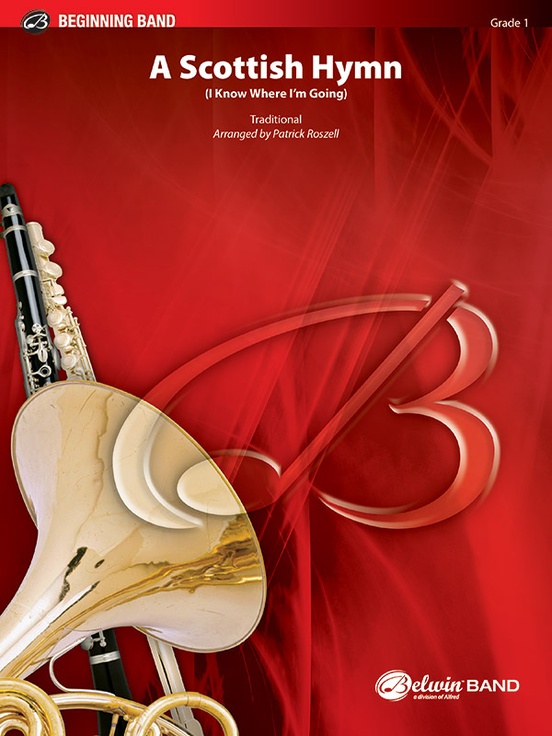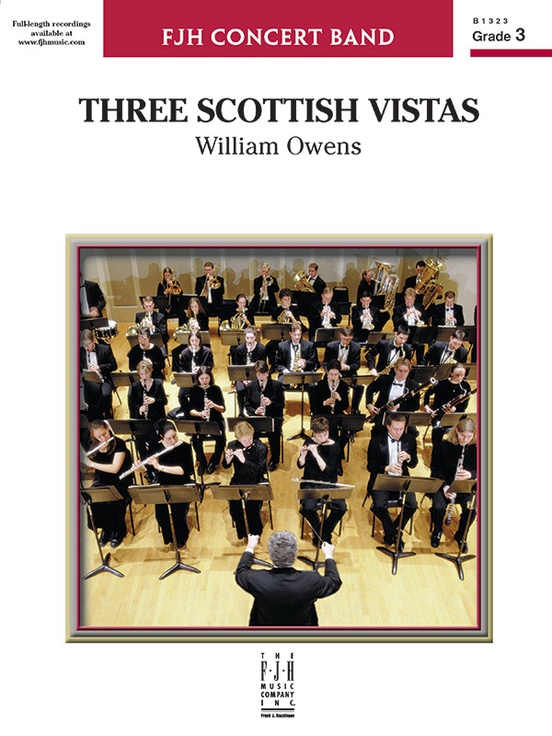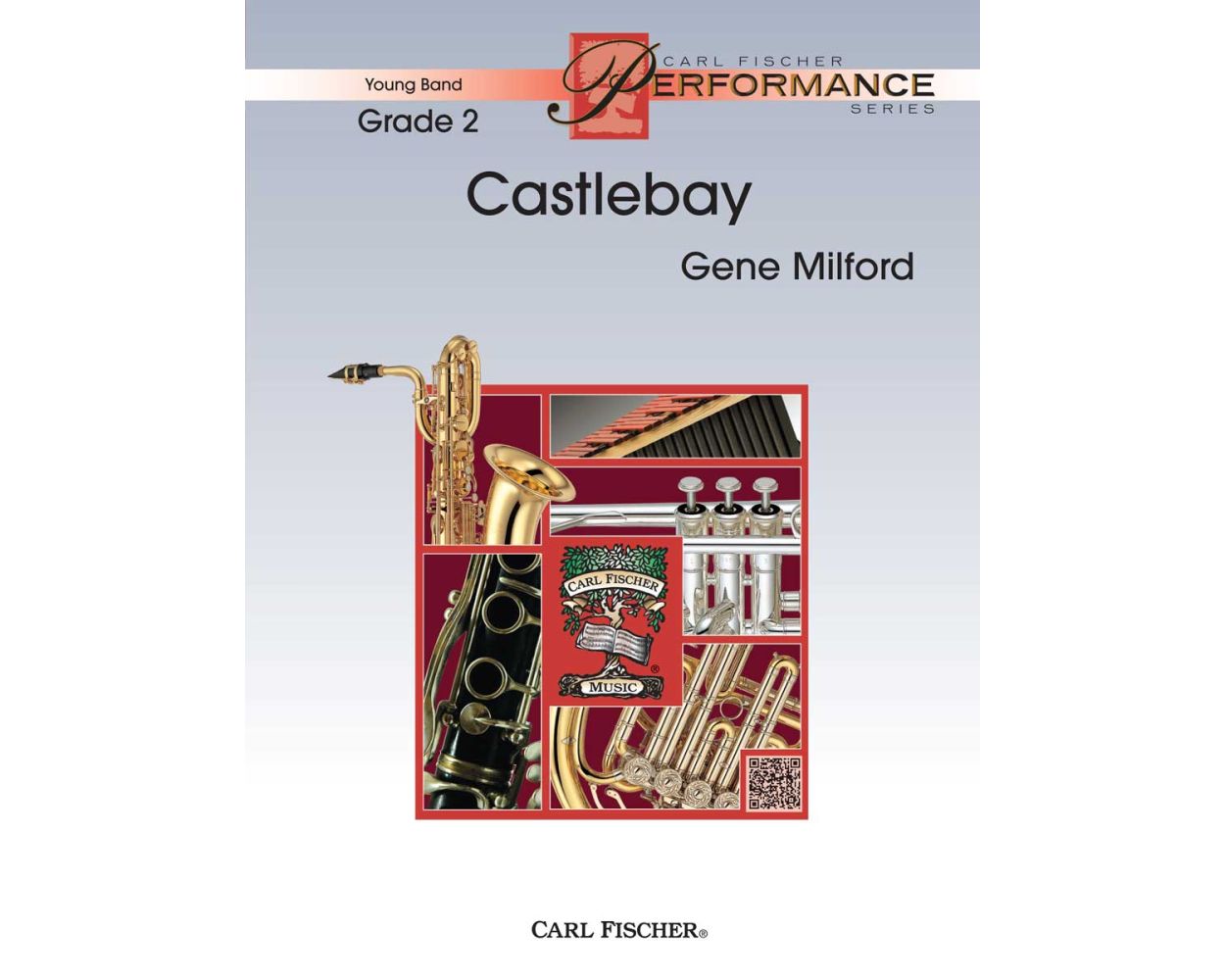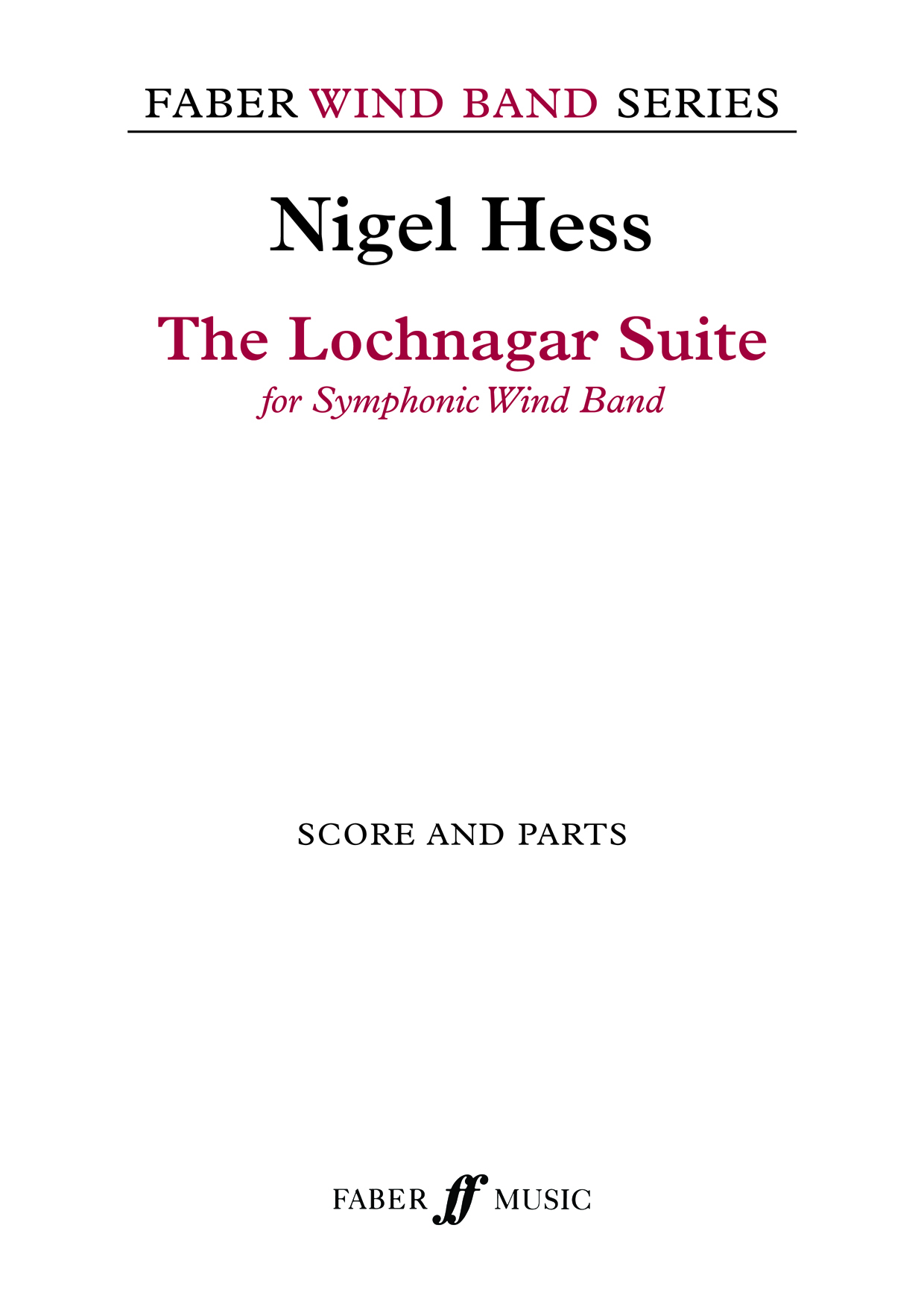Results
-
 £114.95
£114.95SOURCE (Journey of a Scottish River) (Prestige Concert Band - Score and Parts) - Fraser, Bruce
Sub-titled Journey of a Highland River it is a descriptive work with thematic material derived from the composer's initials BCEFA. It basically attempts to describe the origins of a Highland river in a deep mountain cavern and it's subsequent journey as mountain stream gathering momentum as wends it's way to the rolling waves of the sea. Performance time 7'39' (Recorded on QPRM148D, VIZCAYA, Royal Northern College of Music Wind Orchestra)
Estimated dispatch 7-14 working days
-
 £32.95
£32.95SOURCE (Journey of a Scottish River) (Prestige Concert Band - Score only) - Fraser, Bruce
Sub-titled Journey of a Highland River it is a descriptive work with thematic material derived from the composer's initials BCEFA. It basically attempts to describe the origins of a Highland river in a deep mountain cavern and it's subsequent journey as mountain stream gathering momentum as wends it's way to the rolling waves of the sea. Grade 5. Performance time 7'39' (Recorded on QPRM148D, VIZCAYA, Royal Northern College of Music Wind Orchestra)
Estimated dispatch 7-14 working days
-
 £44.55
£44.55Three Scottish Folk Songs (Concert Band - Score and Parts)
Another dramatic and exciting contest work for the young band by the composer of the best selling ``Furious Fable'' and ``Thunder Mountain Overture.'' This piece opens with a majestic burst of color, proceeds to an allegro section containing contrasting moments of mystery and drama with an underlay of driving percussion resulting in a real Spears "barnburner.''
Estimated dispatch 7-14 working days
-
 £42.60
£42.60Three Scottish Tunes (Flexible Ensemble - Score and Parts) - Hume, Rob J.
4 Part Flexible Ensemble and PercussionIncludes:In the HighlandsRowan TreeBonnie Galloway
Estimated dispatch 7-14 working days
-
 £53.95
£53.95A Scottish Hymn
Based on the folk song "I Know Where I'm Going," , by Patrick Roszell, is a lush ballad setting that is perfect for teaching lyrical playing to younger musicians. This setting provides numerous teaching opportunities for slurring, legato tonguing, phrasing, intonation, and dynamic shaping. The perfect selection for your next concert or contest! (1:55)
Estimated dispatch 3-5 working days
-
 £82.95
£82.95Three Scottish Vistas - William Owens
This short three-movement work paints a picture of one of the most beautiful and historically rich countries in the world. The first movement, This Proud People, quotes bits of Scotland the Brave, the unofficial anthem of Scotland, before introducing the sounds of a traditional pipe and drum band. The second movement, The South of Skye, pays tribute to countless quiet sandy beaches and small islands. The final movement, Glasgow, the West End, salutes this culturally rich area with a wild fiery jig that continues to accelerate to a powerful conclusion. Fantastic writing!
Estimated dispatch 3-5 working days
-
 £71.50
£71.50Purple Mountain Heather - Michael J. Miller
In the late summer months, the Scottish countryside is covered by the heather flower. Purple in color, it makes the otherwise harsh landscape a place of tranquil beauty. In this adaptation of the Scottish folk song Wild Mountain Thyme, composer Michael J. Miller's Purple Mountain Heather captures the serenity of the Scottish moors in full bloom. Flowing melodies phrased with expressive shaping are passed throughout the ensemble, creating heartfelt drama for all to enjoy!
Estimated dispatch 7-14 working days
-
£85.00
The Lochnagar Suite (Score & Parts) - Nigel Hess
The Old Man of Lochnager is a three-movement suite for wind band based on the composer's ballet score of the same name. The Dance of the Eagle describes the majestic and dynamic Lord of the Air, who guides the Old Man on his adventures; Dark Lochnagar is a wistful arrangement of a 19th-century Scottish ballad to accompany the Old Man finding his true love; and Scottish Dances depicts a joyous Highlands dance festival during which the Old Man rediscovers his lost youth.Wind Band Grade 5: AdvancedDuration: 13 minutes.
In stock: Estimated delivery 1-3 days
-
 £53.00
£53.00Castlebay
This fresh new setting of two traditional Scottish folk songs, Will Ye No Come Back Again and Keel Row, was written in honor of its namesake, the Scottish village Castlebay. Composer Gene Milford has crafted a well-scored offering for contest/festival performance that is reminiscent of English-style band pieces. After the striking opening, the piece moves to the more fiddle-like Keel Row in a lilting 6/8. All of the sections of the ensemble get to shine and the band will sound formidable with this piece.
Estimated dispatch 12-14 working days
-
 £93.50
£93.50Highlander - Tyler Arcari
Powerful and cinematic, this composition will have musicians and audiences picturing the awe-inspiring Scottish Highlands. Intentionally "not" drawing on traditional Scottish sounds Highlander brings a fresh harmonic and melodic perspective from composer Tyler Arcari.
Estimated dispatch 7-14 working days

